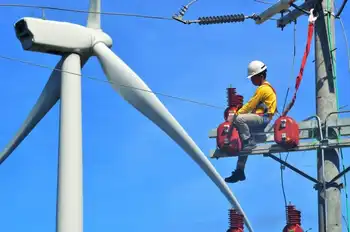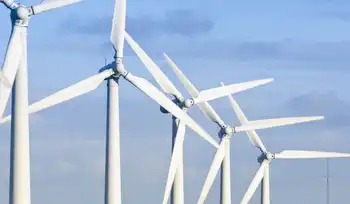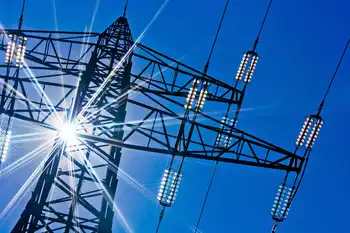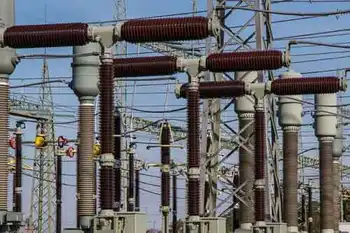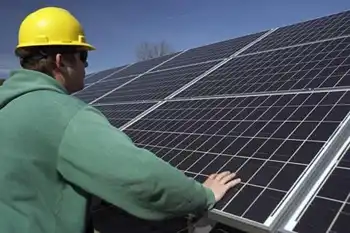Company to mine salt, store wind
By Associated Press
Substation Relay Protection Training
Our customized live online or in‑person group training can be delivered to your staff at your location.

- Live Online
- 12 hours Instructor-led
- Group Training Available
Denver-based Dakota Salts LLC says it wants to use voids created by mining in Burke County to store compressed air to be sold to wind farms to generate electricity. The mining caverns also could store carbon dioxide from North Dakota's coal-burning power plants or natural gas from the state's oil fields, the company said.
Walter Doyle, the London-based chairman of Dakota Salts, said the rich salt and untapped potash deposits in the northwestern part of the state, along with huge wind farms planned in the area, made the project attractive. The newly formed company intends to use idled drill rigs from the state's oil patch to bore for salt and potash, a form of salt used for fertilizer, he said.
"This is so ripe, it's falling off the tree," Doyle said of the project.
London-based Sirius Exploration PLC, which has mining interests in China and Macedonia, acquired 51-percent interest in Dakota Salts last month.
The mining and wind-capturing project's price tag is pegged at between $75 million and $100 million, Doyle said.
The growing domestic and global demand for salt and potash alone likely will make the project pencil out, he said.
"Revenue from mining production would pay for the whole concern," Doyle said. "Creating an energy storage system from the recovery of the minerals will be a bonus."
Ed Murphy, the North Dakota state geologist, said the company has not submitted applications for mining permits but he expects them soon.
"So many of these things don't go anywhere, but I'm hopeful this will," Murphy said. "It combines resources that we've got — salt, potash and wind — and utilizes them."
Industrial and consumer salt demand is growing at a rate of 20 percent annually, while the demand for potash is 10 times that, Doyle said.
"Salt is an amazing product — there are 27,000 uses for it," Doyle said. "Basic road salt has gone from $40 a ton to $170 a ton and the U.S. can't get enough of it so it's being imported from South America."
The Burke County mines would be near a proposed 2,000-megawatt wind farm that North Dakota regulators say will be one of the world's biggest wind energy projects.
Hartland Wind Farm LLC is planning the $4 billion project in Burke, Ward and Mountrail counties. The company is a joint venture involving Denali Energy of Baxter, Minn., and Montgomery Energy Partners of Houston. It plans more than 1,300 wind towers with construction to start late next year.
Doyle said the idea is to get compressed air from wind farms during periods of low electricity demand and pump the air into underground mining holes and cap them. During periods of high electricity demand or when the wind is not blowing, the compressed air would be released and run through a turbine to create power, he said.
"The biggest problem with a wind farm is that when the wind doesn't blow, the lights go out," Doyle said. "This balances out that problem."
Doyle said the compressed air energy storage technology has been used at a plant in Huntorf, Germany, since 1978 and at a plant in McIntosh, Ala., for about a dozen years. Both plants use depleted salt reservoirs to store compressed air.
"I'd like to say we're doing something new, but we're not," Doyle said.
Michael Nakhamkin, of Newark, N.J.-based Energy Storage and Power LLC, said he is meeting with Dakota Salts officials this week to review the design of the North Dakota project.
Nakhamkin, a native of Latvia, led the design of the Alabama plant and holds 18 worldwide patents on compressed energy storage.
"It's definitely feasible," Nakhamkin said of the North Dakota project. Several states are considering similar projects, he said.
Doyle said his company hopes to have permits in place this year and begin construction in 2010.
Wayde Schafer, a North Dakota spokesman for the Sierra Club, said his group likely will have no problem with mining for salt and potash as long as it's not on federal land.
He called the compressed-air technology "a self-sustaining energy source that could be the answer to all the critics of wind."
Said Schafer, "This seems, on the face of it, to be very clean and low environmental impact, and may be one of the silver bullets we're looking for.
"But what I think is really intriguing is that air could be the answer to our energy problems, and if air is the answer, then we're sitting pretty good," he said.





